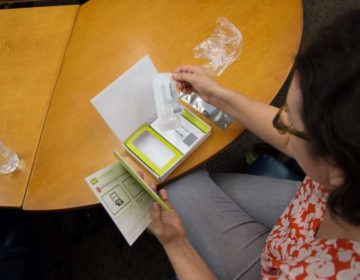Verizon Wireless testing drones for airborne 4G LTE for emergency crews
-
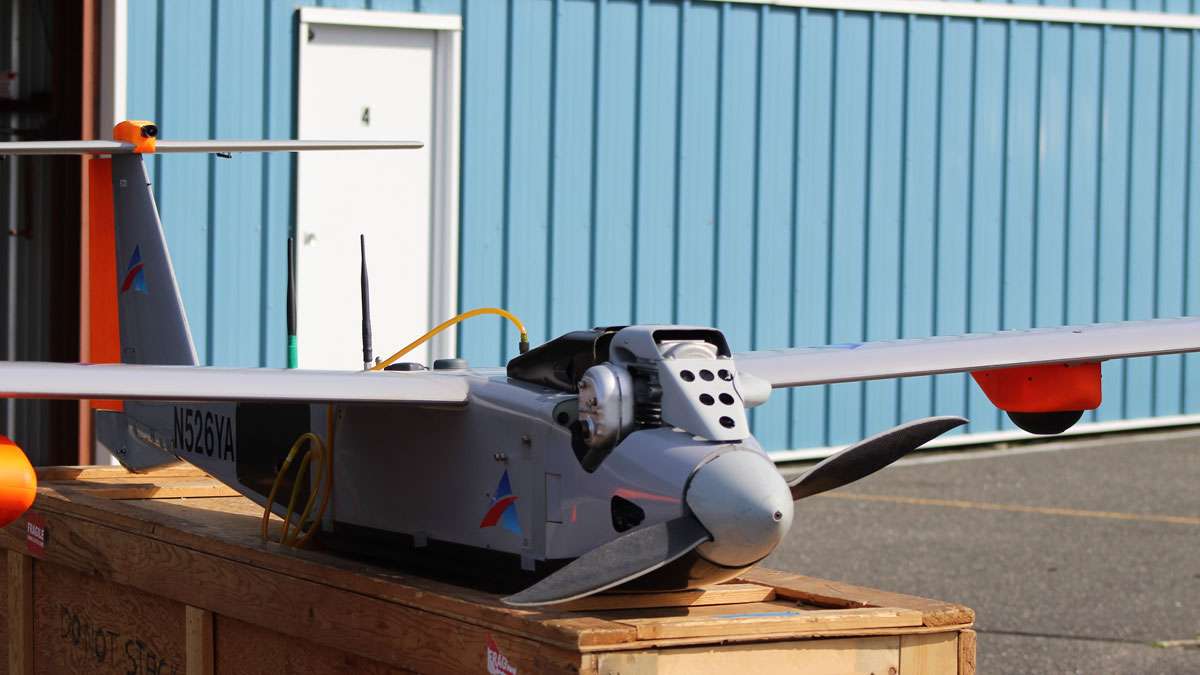
The RS-20 has a 17 foot wingspan and can fly anywhere between 10-16 hours depending on payload and conditions. (Bill Barlow/for WHYY)
-
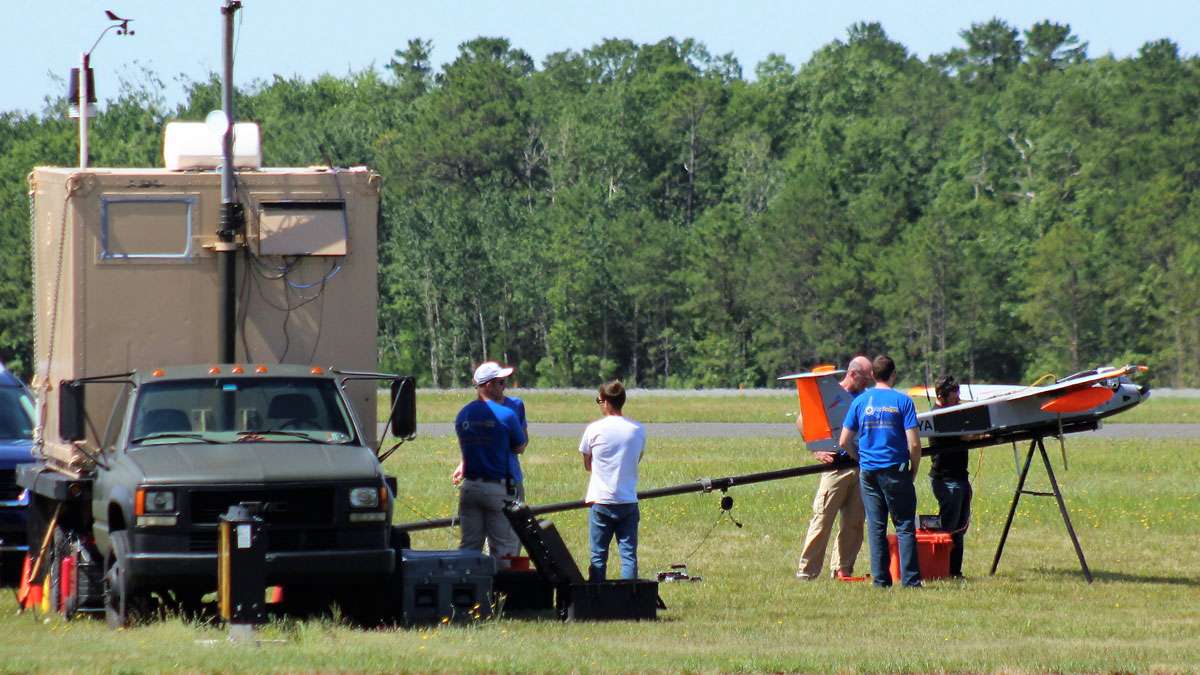
Crews prepare the RS-20 for an catapult launch using highly compressed air. (Bill Barlow/for WHYY)
-
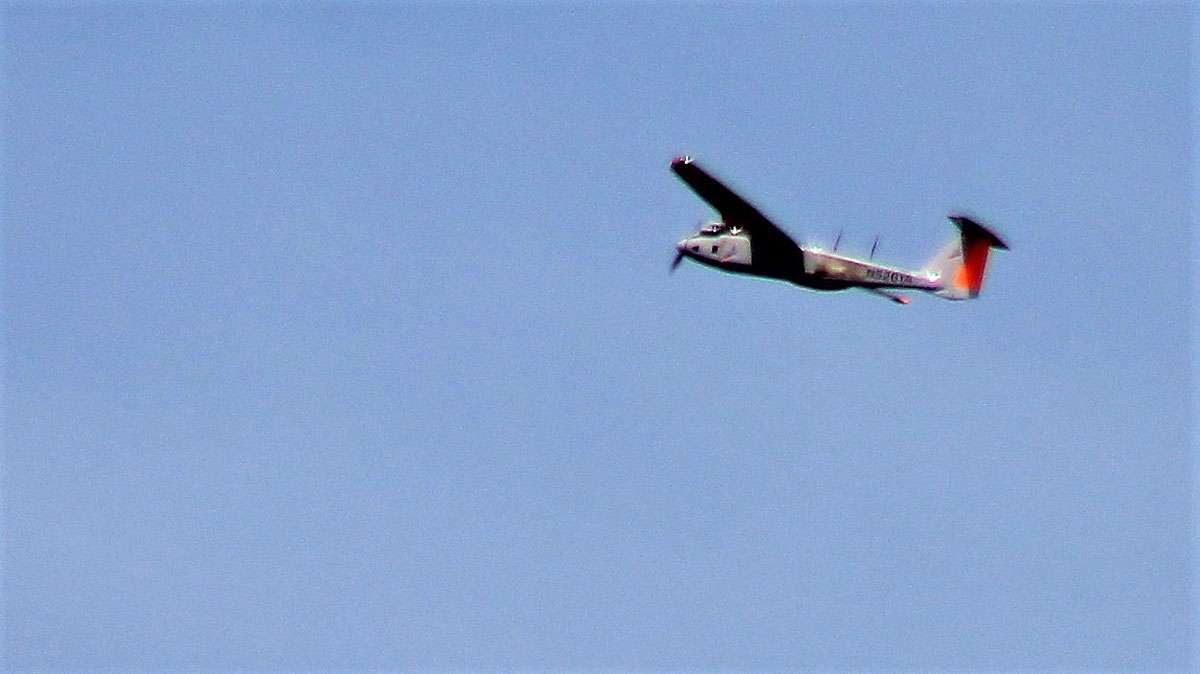
The drone gains altitude before becoming an airborne cell phone tower for this test for Verizon Wireless and first responders. (Bill Barlow/for WHYY)
-
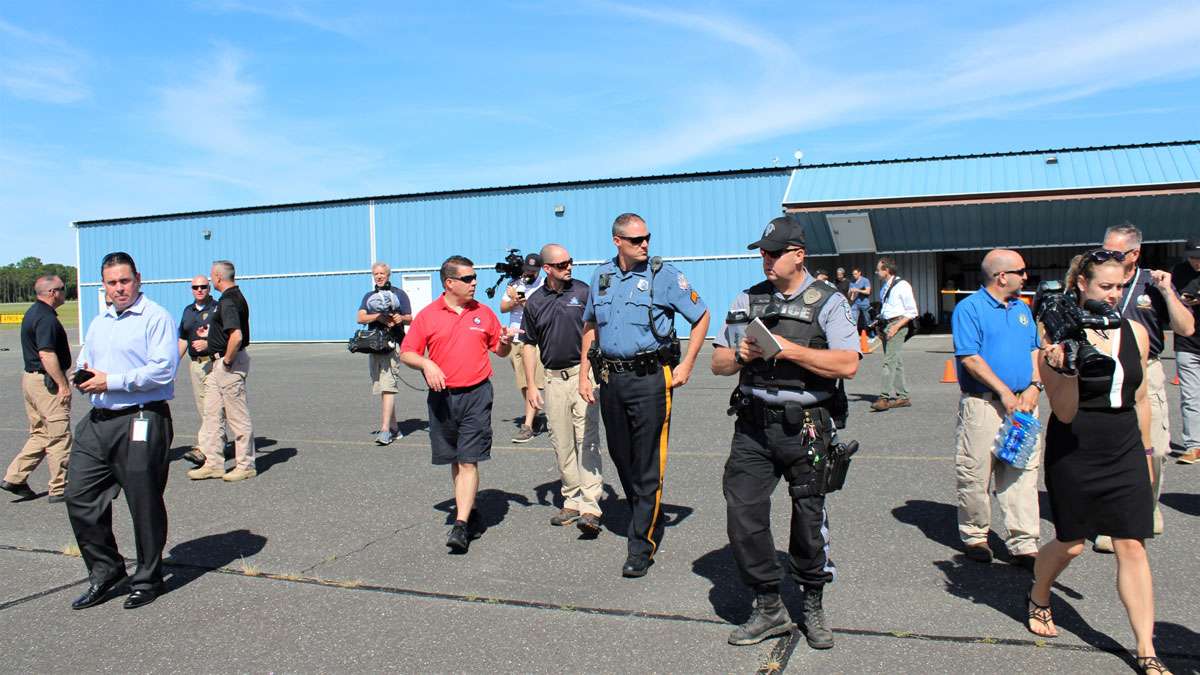
(Bill Barlow for WHYY)
-
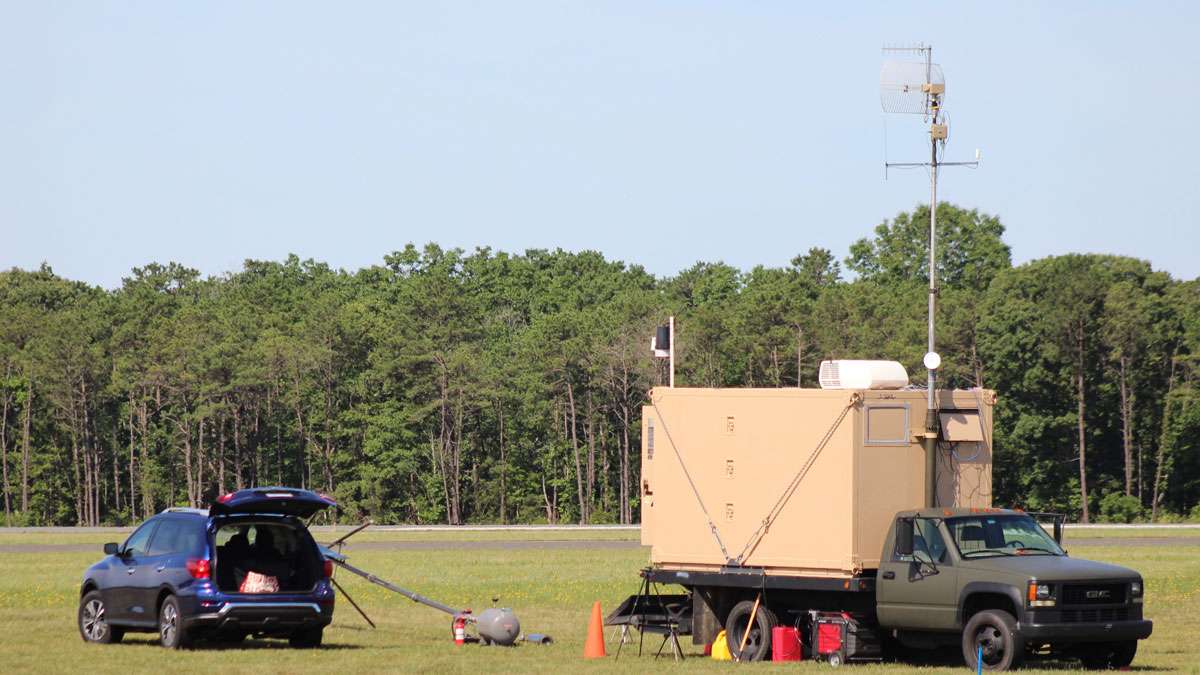
A mobile command vehicle is parked where the drone was launched in Woodbine, N.J. (Bill Barlow/for WHYY)
In a remote corner of South Jersey, a group of emergency first responders entered the woods on Tuesday, June 20, to test a drone-based cell service system. This was the first real-world exercise for a new airborne 4g LTE system Verizon Wireless designed for use after a disaster.
Armed with out-of-the-box civilian cell phones, the small group of police and firefighters were set to try the system in conditions similar to the aftermath of a Sandy-level hurricane hitting the coast.American Aerospace Technologies developed the system with Verizon Wireless, in which an air—based cell system is mounted to a drone, to provide cell service where the regular system had been knocked out. Christopher Desmond, an engineer with the Verizon Wireless Network, said other companies are working on similar technology, but he believes Verizon and American Aerospace Technologies are the first to present a public demonstration.
American Aerospace Technologies developed the system with Verizon Wireless, in which an air—based cell system is mounted to a drone, to provide 4G LTE cell service where the regular system had been knocked out. Christopher Desmond, an engineer with the Verizon Wireless Network, said other companies are working on similar technology, but he believes Verizon and American Aerospace Technologies are the first to present a public demonstration.
The drone, a long endurance unmanned system called an RS-20, can carry up to 65 pounds. In this instance, it carried a small device developed by Verizon to provide 4G LTE service from the air. The technology had been tested previously, but on Tuesday, emergency responders from Cape May County’s department of emergency management, the New Jersey State Police, the Coast Guard and local police and fire departments participated, getting the chance to try the technology for themselves.
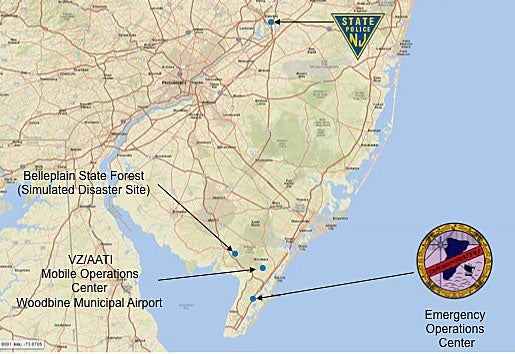 Tuesday’s exercise was meant to simulate the aftermath of a major storm, similar to when Hurricane Sandy struck in the fall of 2012. In that instance, some areas of the county were without service after the storm, and the communities on the barrier islands were cut off. The drone launched from the Woodbine Municipal Airport, a relatively quiet airport, and then the teams headed to the nearby Belleplain State Forest, a relatively remote area of South Jersey where the teams could simulate operation after cell phone service was knocked out.
Tuesday’s exercise was meant to simulate the aftermath of a major storm, similar to when Hurricane Sandy struck in the fall of 2012. In that instance, some areas of the county were without service after the storm, and the communities on the barrier islands were cut off. The drone launched from the Woodbine Municipal Airport, a relatively quiet airport, and then the teams headed to the nearby Belleplain State Forest, a relatively remote area of South Jersey where the teams could simulate operation after cell phone service was knocked out.
“After a disaster, the biggest problem is always communication,” said Martin Pagluighi, the director of emergency management for Cape May County, and the mayor of Avalon. “Anything that can address that will be a help.”
While much of the talk from officials centered on access and response to the barrier islands, Pagluighi said where the drone was needed would depend upon the emergency. For instance, he said, a major wind storm in 2012, known as a derecho, did major damage to mainland communities after downing trees and power lines.
Pagluighi was on site with Cape May County’s mobile command center, a gear-packed RV that can be used to allow communications between agencies and as a remote command center. During the exercise, the officers in the state forest planned to call in to the mobile center, as well as to the emergency management headquarters in Cape May Court House and to the state police regional operations center in Ewing.
Desmond had issued smart phones to the participants. He said they were regular civilian phones, although they were limited to a single signal frequency which Verizon was set to shut down for the exercise. Desmond did not expect any customers to notice a disruption in service, he said. He also equipped the phones with Facebook, Twitter, Instagram and other popular social media platforms, he said. Many police departments have greatly increased their presence on social media in recent years, allowing for a direct connection to the public.
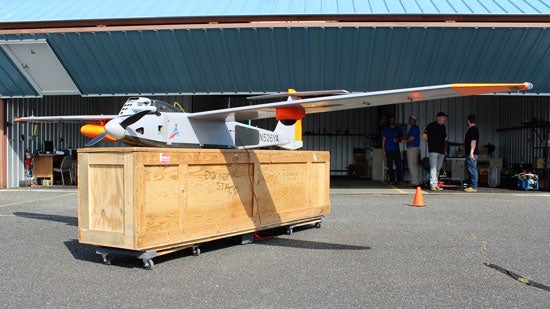
The drone itself has a relatively small engine; big enough to cruise for 10 to 16 hours, but not big enough for liftoff. That allows for more room for payload, and means the unmanned vehicle “sips fuel instead of guzzling it,” as American Aerospace Technologies founder and CEO David Yoel put it. To get the drone airborne, his crew uses a pneumatic launch, basically an air cannon that uses air pressure to pitch the craft into the air.
The pilot then operates the vehicle remotely, from within a portable command center, almost like a cockpit in the back of a truck. FAA rules for drone operations require a line-of-sight connection at all times, which meant on Tuesday a conventional piloted aircraft took off as a spotter vehicle and tailed the drone through the exercise.
County officials say they expect the FAA to waive those rules in an actual emergency, and that because of the work the county has already done with unmanned systems, they expect that approval could come in a matter of hours, particularly after a proof-of-concept test like the one on Tuesday.
The drone flies thousands of feet in the air, according to Yoel. The area of coverage it provides depends on a number of factors, according to Desmond, including the number of trees and buildings in the way, the conditions and the height at which the drone is operating. Think of a flashlight pointed at the floor: move it closer, and the beam is smaller and more concentrated, move the flashlight up and the circle of light grows, but becomes more dissipated. But Desmond said during a test this spring, he and a colleague were about a quarter mile away from each other, and both were in the service range of the system.
According to Yoel, the drone costs about $250,000.
Editor’s note: The video below is a promotional video by American Aerospace Technologies showing how the drone can be used during a large-scale disaster when power and cell-phone service is down.
WHYY is your source for fact-based, in-depth journalism and information. As a nonprofit organization, we rely on financial support from readers like you. Please give today.



